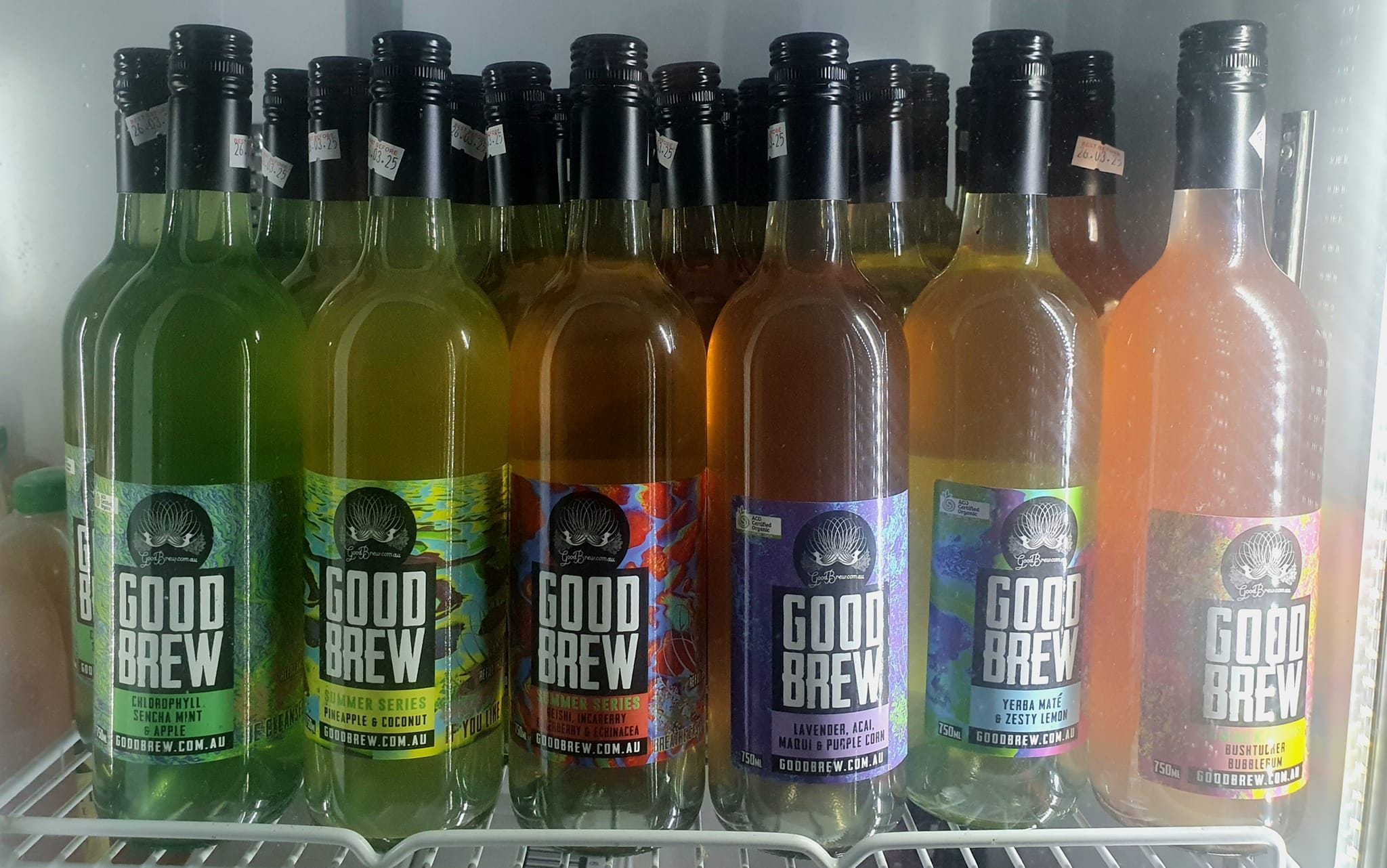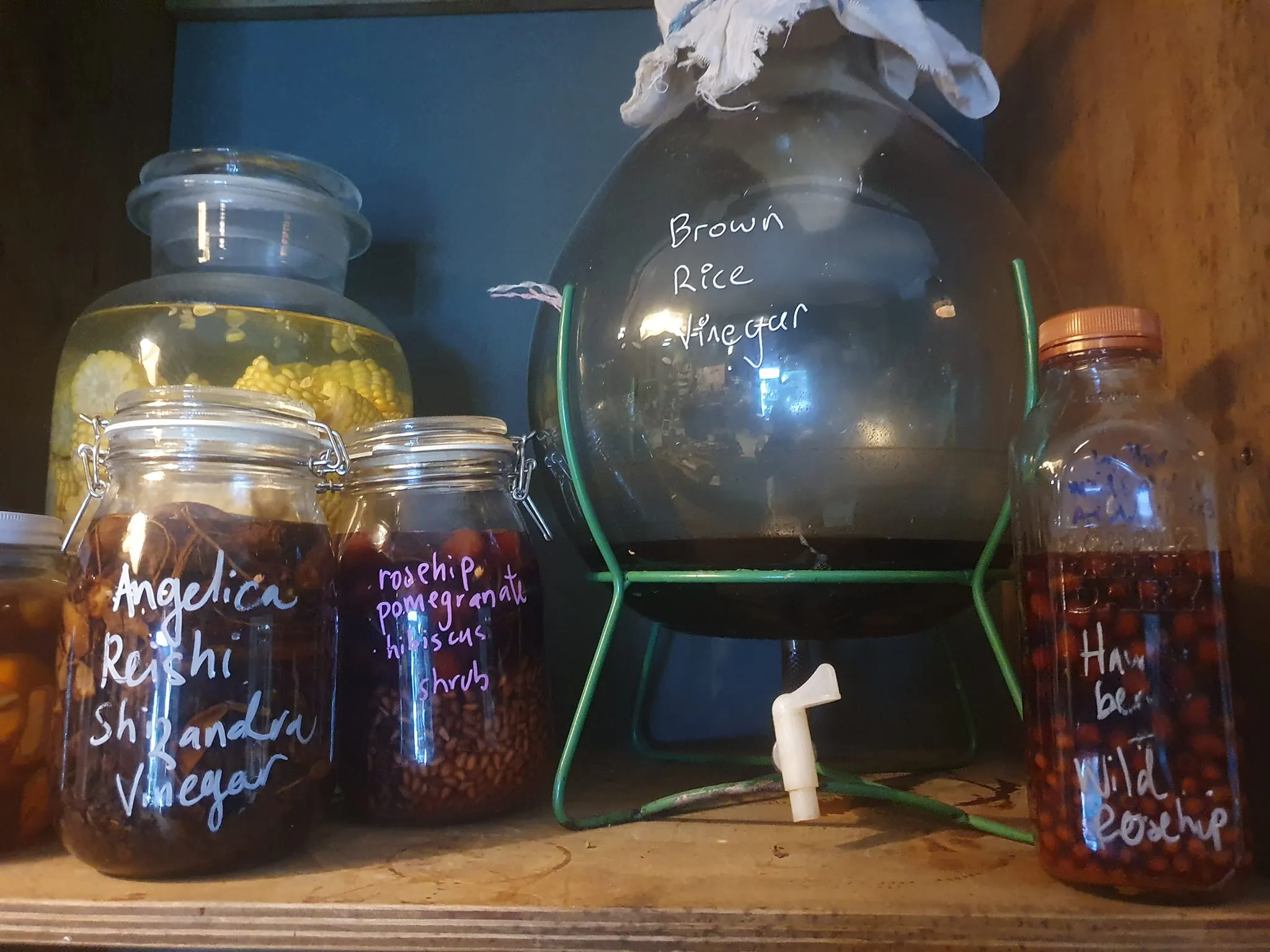
In fact, a lot of what lines supermarket shelves today barely qualifies as kombucha at all. While some brews are raw, unfiltered, and teeming with gut-loving microbes, others are little more than flavoured tea with a fancy label. If you’re drinking kombucha for the health benefits, knowing how to decode a label is critical.
This guide breaks down what to look for – and what to avoid – so you can choose a kombucha that actually does something for your body, not just your Instagram feed.
Why It Matters: Not All Kombucha Is Functional
The biggest trap? Marketing spin. Many supermarket kombuchas are pasteurised, artificially carbonated, and loaded with sugar or stevia. These shortcuts may boost shelf life or flavour, but they strip away the live cultures and fermentation benefits people are often looking for.
True kombucha — the kind that supports digestion, gut microbiota, and even metabolic function — is raw, living, and unfiltered. You just have to know what to look for.

Real Kombucha vs Supermarket Pretenders
| Feature | Functional Kombucha (Like Good Brew) | Shelf-Stable or Mass-Produced Kombucha |
|---|---|---|
| Refrigeration Needed | Yes (live cultures must stay cold) | No (usually pasteurised) |
| Live Cultures / SCOBY | Present and active | Often dead due to pasteurisation |
| Carbonation | Naturally fermented | Force-carbonated with CO₂ |
| Sugar Content | ≤5g per 100ml | Often 7–10g or more |
| Ingredient List | Tea, sugar (for fermentation), SCOBY | Added flavours, sweeteners, preservatives |
| Sediment / Floaties | Yes — natural by-product of fermentation | No — usually filtered out |
| Label Keywords | Raw, unpasteurised, naturally carbonated | Flavoured, shelf-stable, sparkling tea |

5 Key Things to Look for on the Label
1. It Should Be Raw and Unpasteurised
Pasteurisation kills off the live cultures that make kombucha beneficial. If the bottle doesn’t say raw, live cultures, or unpasteurised, it’s likely not doing much for your gut.
2. Check the Sugar
A proper brew should be low in residual sugar — ideally less than 5g per 100ml. Higher than that? It’s either under-fermented or has added sugars post-brew.
3. Look for Naturally Carbonated
Avoid brands that list carbonation or CO₂ as an ingredient. Natural bubbles come from secondary fermentation (not gas injection).
4. The Simpler the Better
A good kombucha label should have a short, clean ingredient list:
- Filtered water
- Organic tea
- Organic cane sugar (used in fermentation)
- SCOBY or live cultures
- Optional: whole ingredients like herbs, spices or fruit
Skip anything with artificial flavours, preservatives, or trendy sweeteners like stevia or erythritol.
5. Sediment Isn’t a Bad Thing
Floaties? Cloudiness? That’s the good stuff. Sediment is a sign your kombucha is unfiltered and alive — the polar opposite of something that’s been stripped and sterilised for mass market appeal.
Why Refrigeration Is Non-Negotiable
Live kombucha must be kept cold. The cultures inside are alive and will continue fermenting if not kept at a stable, chilled temperature. If a kombucha brand is sitting warm on a shelf with a six-month expiry date, it’s not the real thing.
Raw, living kombucha (like what we bottle at Good Brew) is brewed the traditional way — and always stored cold to protect those living microbes.
If you’re curious about how kombucha works in your body, check out our What Is Kombucha explainer for a deeper dive.

What does “raw” kombucha actually mean?
It means the kombucha hasn’t been heat-treated or pasteurised. Raw kombucha retains all its live cultures, enzymes, and organic acids that support gut health.
Can shelf-stable kombucha still be healthy?
It might taste fine, but if it’s shelf-stable, it’s almost always pasteurised — which kills the probiotics. It no longer delivers the same gut-supporting benefits.
What sugar level should I look for in a kombucha?
Ideally less than 5g per 100ml. Anything more suggests post-fermentation sweetening, which can undermine the health benefits.
Do all kombuchas need to be refrigerated?
If they’re truly raw and fermented, yes. Refrigeration keeps the cultures alive and prevents over-fermentation or bottle pressure build-up.
Final Word: Don’t Get Fooled by Flavoured Fizzy Tea
Choosing the right kombucha isn’t about the prettiest label or trendiest flavour. It’s about spotting the signs of a living, functional brew — one that’s fermented properly, kept cold, and packed with the compounds your gut actually wants.
Check out our raw, organic kombucha range — brewed the traditional way, unfiltered, naturally carbonated, and always alive. It’s what kombucha was meant to be. Or dive deeper with our complete guide to brewing kombucha at home if you’re ready to take matters into your own hands.

 54 Hope St, Brunswick VIC 3056
54 Hope St, Brunswick VIC 3056
